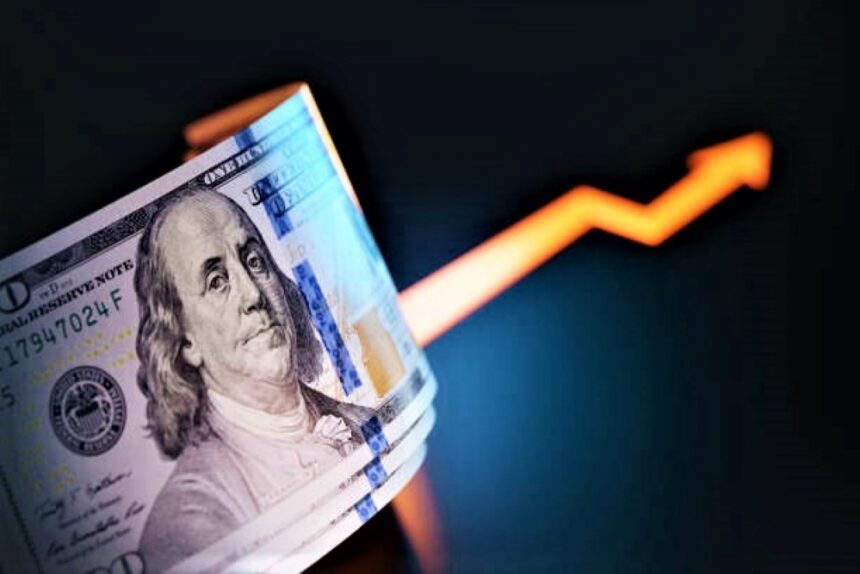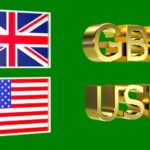US Dollar Under Siege: Trust Erodes Amid Debt Concerns
The US Dollar (USD) finds itself in a precarious position this week, sliding against a basket of its major peers as market confidence in America’s fiscal trajectory wanes. Following Moody’s unprecedented downgrade of U.S. sovereign debt from AAA to AA1 on May 16, 2025, investors are demanding higher yields to compensate for perceived credit risk, pushing the US Dollar Index (DXY) perilously close to the key 100.00 support level. With the Trump administration scrambling to shore up confidence via new trade deals and potential diplomatic breakthroughs in Ukraine, and Federal Reserve speakers poised to offer their latest policy insights, the Greenback’s next moves hinge on a complex interplay of fiscal, monetary, and geopolitical forces.
Moody’s Shockwave: From AAA to AA1
On Friday, May 16, 2025, credit-rating agency Moody’s stunned markets by downgrading the United States’ sovereign credit rating from the flagship AAA to AA1. In its report, Moody’s acknowledged the “significant economic and financial strengths” of the U.S. but warned that they “no longer fully counterbalance the decline in fiscal metrics,” pointing to ballooning deficits and an unprecedented debt trajectory under the current administration. This move marked the first time in history that the United States lost its AAA status with Moody’s, fundamentally shaking the presumed safe-haven status of U.S. Treasuries. Investors, once comfortable with minimal yield premiums, now demand compensation for holding what was once considered risk-free government debt. The immediate consequence: U.S. Treasury yields spiked, with the 10-year yield jumping from 4.30% at the end of trading on Thursday to 4.52% at the open on Monday, May 19, 2025.
Risk Premium Rising: Yields Climb, Borrowing Costs Soar
The surge in yields reflects the market’s recalibrated perception of U.S. credit risk. As yields rise, borrowing costs across the economy escalate: mortgage rates tick higher, corporations face steeper expenses to issue debt, and even state and local governments may feel the pinch when tapping into federal credit markets. This broad-based cost increase can dampen consumer spending and corporate investment, potentially slowing economic growth. From the perspective of bond investors, the risk premium—the extra yield required over a risk-free benchmark—now factors prominently into every buy decision. This premium not only compensates for the credit downgrade itself but also for the uncertainty surrounding future fiscal policy. With U.S. deficits projected to widen further amid tax cuts and high spending levels, the premium could remain elevated for months, if not years, putting sustained pressure on the USD.
Fed’s Dilemma: Rate Cuts vs. Market Realities
Just as inflationary pressures have started to abate, opening the door for potential rate cuts later in 2025, the surge in yields threatens to tighten financial conditions regardless of the Federal Reserve’s policy intent. In plain terms, even if the Fed were to lower its benchmark rates, market-driven long-term yields—bolstered by higher risk premiums—could negate the stimulative effect of a rate cut. As of May 19, 2025, the CME FedWatch Tool signals an 8.3% chance of a June rate cut and a 36.8% probability for July, down sharply from expectations just a week earlier. The divergence between short-term policy rates and long-term market rates complicates the Fed’s dual mandate of price stability and maximum employment. If higher borrowing costs choke off growth, the Fed may face pressure to maintain rates higher for longer—even as headline inflation cools.
The Monday Lineup: Fed Speakers Take Center Stage
In the absence of major U.S. economic releases on Monday, May 19, 2025, market focus has shifted to a slate of Federal Reserve speakers. Traders will parse their comments for clues on the Fed’s reaction to the downgrade and its policy outlook:
- Raphael Bostic (12:30 GMT)—President of the Atlanta Fed, speaking at the 2025 Financial Markets Conference in Florida. Bostic cautioned that the downgrade’s ripple effects could unfold over “another three to six months,” affecting consumer confidence and spending patterns as tariff uncertainty lingers.
- Philip Jefferson (12:45 GMT)—Fed Vice Chair, addressing liquidity facilities at the same Florida conference. Jefferson stressed the Fed’s balanced approach, warning of risks to both price stability and labor-market health.
- John Williams—President of the New York Fed, moderating at the MBA’s Secondary and Capital Markets Conference in New York. Williams is expected to focus on market functioning and balance-sheet normalization.
- Lorie Logan (17:15 GMT)—President of the Dallas Fed, delivering opening remarks in Florida. Logan’s insights on market structure could hint at the Fed’s tolerance for bond-market volatility.
- Neel Kashkari (17:30 GMT)—President of the Minneapolis Fed, speaking at the Minnesota Young American Leaders Program. Kashkari, often known for his dovish leanings, may highlight labor-market concerns and argue for policy patience.
Each of these perspectives will feed into traders’ risk assessments and could either fan the flames of USD weakness or offer a temporary reprieve if officials emphasize financial stability over inflation fears.
FX Fallout: US Dollar Bleeds Across the Board
The DXY, which measures the USD against six major currencies (EUR, JPY, GBP, CAD, SEK, and CHF), dipped below its 50-day moving average on Monday and is flirting with the 101.00 mark—an ominous signal for bulls. Should it breach the 100.00 threshold, last seen in early April 2025, technical traders will likely target 99.50 next, opening the door to deeper corrective retracements.
- Euro (EUR): Benefiting from stronger-than-expected eurozone PMI readings and a more hawkish ECB narrative, the EUR/USD pair briefly surged above 1.0900.
- Japanese Yen (JPY): As a traditional safe haven, the JPY strengthened in knee-jerk reactions to heightened risk premia, pushing USDJPY toward 132.00.
- British Pound (GBP): GBP/USD found support on Brexit deal optimism and stronger UK retail sales data, rebounding to 1.2700.
- Commodity Currencies (AUD & CAD): The Australian and Canadian dollars ticked higher amid broader risk-on flows, despite mixed commodity-price signals.
Equity Markets Worry: Tech Stocks Take a Hit
At Monday’s open, U.S. stock indices traded in the red, led by a 1% slide in the Nasdaq Composite as technology and growth-oriented equities proved especially sensitive to rising long-term yields. The S&P 500 and Dow Jones Industrial Average also registered losses of around 0.7% and 0.5%, respectively. Growth stocks, which rely on discounted future cash flows, face valuation headwinds when yields climb—effectively raising the discount rate and shrinking net present values. Conversely, value stocks and financials may outperform, given their floating-rate exposure and relative resilience to higher borrowing costs.
Geopolitical Hopes: Trade Deals and Ukraine Diplomacy
In a bid to restore market confidence, the Trump administration is reportedly accelerating efforts to finalize a major trade agreement—potentially with the U.K., Japan, or India—and to push for a diplomatic breakthrough in the Ukraine conflict. A signed deal or peace-progress announcement could serve as a powerful risk-positive catalyst, bolstering both equities and the USD. However, skepticism runs deep. Previous trade negotiations have stalled repeatedly, and diplomatic breakthroughs in Ukraine remain elusive amid entrenched positions and complex multinational dynamics. Traders will watch statements from U.S. trade representatives and the State Department closely for any signs that tangible progress is imminent.
Technical Crossroads: US Dollar Will 100.00 Break or Hold?
From a technical perspective, the 100.00 level on the DXY is a critical battleground. A decisive break below it would signal that market participants are willing to entertain more pronounced USD depreciation, potentially targeting the 99.50–99.00 zone—levels last tested in March 2025. In contrast, any failed breakdown could trap sellers and spark a relief rally back toward 101.50, the next resistance confluence near the 200-day moving average. Chart-watchers will monitor volume spikes on breakouts and employ momentum indicators such as the Relative Strength Index (RSI) to gauge exhaustion. Meanwhile, options-market skew—in particular, the cost differential between USD puts and calls—offers insight into how protective traders are against further declines.
9. What’s Ahead: Key Data and Events
- Fed Speakers Round Two: Several officials are slated to speak later this week, including Fed Chair Jerome Powell—a must-watch appearance for any shift in the Fed’s tone.
- Treasury Auction Calendar: Upcoming auctions of 2-, 5-, and 7-year notes will test demand under the new risk-premium regime.
- U.S. Economic Releases: Thursday’s May PMI prints and Friday’s retail-sales report will offer fresh clues on growth momentum and consumer resilience.
- Geopolitical News Flow: Trade-negotiation updates and diplomatic communiqués on Ukraine could swing risk sentiment sharply.
Trader Takeaways: Strategies in a Shaky Dollar Environment
- Hedge with Options: Consider protective USD puts or collar strategies if you hold significant USD exposure and fear further downside.
- Diversify with Alternatives: Look to currencies with robust fiscal profiles—like the Swiss franc—or hard assets such as gold and selective commodities.
- Monitor Yield Curves: A steepening U.S. yield curve may signal market demand for longer-dated Treasuries remains strong, even amid higher risk premia.
- Stay News-Savvy: Real-time geopolitical updates and Fed-speak transcripts can rapidly alter positioning. Use a high-frequency news feed for timely alerts.







